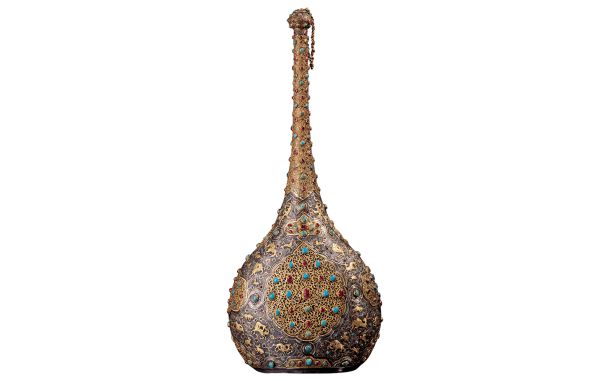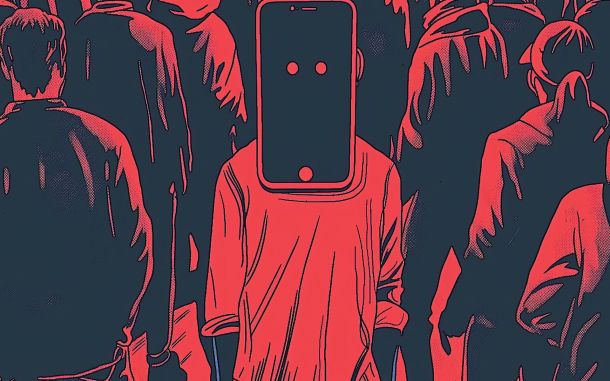Hope: A Stabilizing Force During Times of Upheaval

In This Article
-
Hope is not just a passive feeling, but an active, dynamic mindset that influences how people approach goals and overcome difficulties.
-
“Fear and hope are two of the greatest gifts of God that He may implant in a believer’s heart. If there is a gift greater than these, it is that one should preserve the balance between fear and hope and then use them as two wings of light with which to reach God.”
-
Hope emerges as a transformational force in the fabric of mental well-being, with numerous benefits for persons suffering from anxiety and depression.
“Hope is being able to see that there is light despite all of the darkness.” – Desmond Tutu
In the sometimes-stormy landscape of life, hope, a tremendous and transforming force within the human psyche, rises as a beacon of light. Take Malala Yousafzai, the youngest Nobel Prize laureate for example. She has become a global symbol of hope and resilience. Despite being shot for advocating for girls' education, she continued her fight for education rights. Malala once said, “When the whole world is silent, even one voice becomes powerful” [1]. Her unwavering hope and courage inspire millions worldwide, showing that hope can prevail even in the face of extreme adversity.
The essence of hope plays a vital role in the journey of healing, offering individuals a clear path toward recovery by reshaping their thinking and bolstering their emotional strength. Research shows that hope acts as a catalyst for restructuring our cognitive processes, breaking the cycle of negative thoughts [2]. Cultivating a hopeful mindset leads to more positive and adaptive thinking patterns [3]. This shift in cognition enables individuals to view obstacles differently, identify solutions, and envision a future brimming with opportunities, thereby easing the cognitive burdens of despair.
The power of hope rests in its potential to drive people to make positive behavioral adjustments. We are more inclined to engage in goal-directed acts when we have hope, looking for opportunities for personal progress and positive transformation [4]. This desire becomes a driving force in the treatment of hopelessness, pushing people to actively participate in therapeutic procedures and understand well-being-promoting lifestyles.
During times of emotional upheaval, hope functions as a stabilizing force. Individuals who retain a positive attitude display increased emotional resilience, allowing them to handle the emotional disruptions with better adaptability [5]. Hope provides individuals with the emotional fortitude they need to weather setbacks, cope with stress, and recover from adversity, promoting a more robust emotional well-being. It promotes the development and application of coping skills, which are critical in navigating life's challenges. Individuals who receive social support, practice mindfulness techniques, or engage in creative outlets are more likely to use adaptive coping mechanisms. These mechanisms become essential tools, assisting individuals in effectively navigating the complexities of personal struggles.
One of the most significant advantages of hope is its ability to reduce emotions of powerlessness that frequently accompany sadness and despair [6]. A hopeful mindset empowers people by creating faith in their ability to affect positive change. This sense of power and agency counteracts the paralyzing effects of hopelessness. In fact, the development of hope in psychology entails a variety of treatment strategies aimed at promoting an optimistic outlook and belief in the possibility of positive transformation [7]. Snyder’s Hope Theory [8] for example, focuses on hope as a cognitive process that incorporates goal-setting. According to this notion, hope is not just a passive feeling, but an active, dynamic mindset that influences how people approach goals and overcome difficulties. This theory emphasizes pathway thinking (defined as planning to reach goals) and agency thinking (a desire to pursue goals) as fundamental components of hope. Goal-setting is a common therapeutic strategy in which individuals collaborate with therapists to establish realistic and attainable objectives. Breaking down larger goals into smaller, more achievable tasks fosters a sense of success and progress, which reinforces hope.
Another strategy involves positive visualization [9], encouraging people to envision a future where their aspirations are realized. This mental rehearsal can enhance motivation and foster a more positive outlook. Additionally, cognitive-behavioral therapies challenge and reframe negative thought patterns, helping individuals to identify and replace skewed thinking with more balanced and hopeful perspectives [10]. Theology emphasizing hope often aligns with humanistic and existential ideologies that highlight an individual's potential for growth and self-determination. According to this concept, individuals can surmount challenges and lead meaningful lives. This therapeutic approach empowers individuals to actively shape their futures, fostering a sense of agency and purpose.
Snyder's Hope Theory has been used as a paradigm for understanding and encouraging hope as a vital resource for personal development and well-being in a variety of sectors, including clinical psychology, education, and coaching [11]. In both Sufi tradition and Snyder's Hope Theory, there is a shared emphasis on a forward-looking, hopeful perspective toward the future. The Sufi concept of "raja," [12] aligns with certain aspects of Snyder's ideas. "Raja" translates to "hope" or "aspiration" in Sufism, embodying the belief in maintaining hope and trust in the Divine amidst adversity. This Sufi perspective pursues closeness to the Divine and enduring challenges with patience and faith in Divine mercy. Yet, the concept of “raja” entails more than just optimism; it entails a profound purpose and significance derived from spiritual beliefs.
For a Sufi, Raja signifies patiently awaiting the fulfillment of heartfelt desires, embracing the acceptance of good deeds, and seeking forgiveness for sins. This hope and expectation stem from the belief that individuals bear sole responsibility for their mistakes and sins, while acknowledging that all goodness originates from God's mercy. To avoid being ensnared by vices and arrogance regarding their virtues, Sufi initiates strive to draw closer to God through continuous acts of seeking forgiveness, prayer, avoidance of wrongdoing, and performing virtuous deeds.
Raja, hope or expectation differs significantly from a mere wish. While a wish is a desire that may or may not come true, hope or expectation represents an active pursuit by the initiate through lawful means toward their desired goal. The believer strives with a profound insight and awareness, seeking to open all pathways to Divine grace and assistance. Hope entails a steadfast belief that, akin to God's attributes of knowledge, will, and power, His mercy encompasses all creation, with the anticipation of being embraced in His special mercy [13]. We must not reject this mercy!
The Impact of Hope on the Brain and Heart
Hope has significant scientific impacts on both our hearts and brains, influencing our physical health and mental well-being in profound ways. In the brain, hopeful thinking can stimulate neuroplasticity, allowing individuals to adapt better to new situations and recover from brain injuries more effectively. Hope and positive expectations are also associated with the release of dopamine, a neurotransmitter linked to pleasure, motivation, and reward, which enhances mood, motivation, and cognitive function. Additionally, hope can mitigate the effects of stress by reducing cortisol production, the stress hormone, leading to decreased anxiety, improved memory, and better overall mental health. Hopeful individuals tend to have better problem-solving skills and are more creative in finding solutions to challenges, as hope fosters a positive mindset that encourages persistence and resilience [14].
In terms of cardiovascular health, hope and optimism are linked to better outcomes. Hopeful individuals have a lower risk of heart disease, lower blood pressure, and better heart rate variability, which is a marker of heart health. A hopeful outlook can reduce the risk of heart attacks and strokes by lowering the strain on the cardiovascular system due to its stress-reducing effects. Patients with a hopeful attitude often recover better and more quickly from cardiac events like heart attacks or surgeries, as hope improves adherence to medical advice and lifestyle changes, enhancing recovery rates [15].
Overall, hope contributes to enhanced immune function, making individuals more resistant to infections and illnesses by alleviating chronic stress, which can weaken immune function. Research indicates that hopeful and optimistic individuals tend to live longer, as hope fosters healthier lifestyles, better stress management, and stronger social connections, all factors associated with increased lifespan. Additionally, hope is a protective factor against mental health disorders such as depression and anxiety, fostering resilience and helping individuals cope better with adversity. By fostering hope, individuals can experience a range of benefits that contribute to a healthier, longer, and more fulfilling life.
From Theory to Application
Incorporating Snyder's Hope Theory into daily life involves actively cultivating hope through goal setting, pathways thinking, and agency thinking. Start by defining specific, meaningful goals that motivate and inspire you, breaking them down into smaller, manageable steps to make them more achievable. Develop pathways thinking by identifying multiple routes to reach your goals, planning ahead for potential obstacles, and brainstorming solutions. Foster agency thinking by believing in your abilities, reflecting on past successes, and using positive self-talk and visualization to maintain enthusiasm and determination. Cultivate a hopeful mindset through regular positive visualization and focusing on positive outcomes, maintaining a solution-oriented approach when facing challenges.
Engage in daily reflection by journaling your progress, celebrating successes, and reflecting on challenges to reinforce pathways and agency thinking. Seek social support by building a network of supportive and positive individuals who encourage your goals and provide valuable feedback and encouragement. Practice self-care by maintaining a balance between working towards your goals and taking care of your physical and emotional well-being, using mindfulness and relaxation techniques to manage stress. Lastly, embrace change and be flexible, adjusting your goals and pathways as needed to adapt to new circumstances and maintain hope even when things don't go as planned.
Integrating the concept of "raja" into this process adds a spiritual dimension that deepens resilience and optimism. Raja involves placing trust in Divine benevolence, encouraging a sense of hope and patience even during difficult times. This trust can bolster pathways thinking by fostering a belief in multiple ways to achieve spiritual and personal goals, supported by Divine guidance. Similarly, it enhances agency thinking by reinforcing the conviction that personal efforts are complemented by Divine support. Practices such as prayer, meditation, and acts of charity, which are central to raja, can be incorporated into daily routines to strengthen spiritual connection and emotional resilience. By combining the practical strategies of Hope Theory with the spiritual essence of raja, individuals can navigate life's challenges with a fortified sense of purpose, optimism, and inner peace.
In recognizing the profound scientific impacts of hope on our hearts and brains, we must also acknowledge the essential role of the Divine in this equation. The power of hope is not merely a psychological construct but is deeply intertwined with spiritual beliefs and trust in a Higher Power. The sense of Divine support and guidance offers an unparalleled source of strength and comfort, particularly in times of adversity. This divine connection can amplify the benefits of hope, providing a foundation of faith that bolsters our mental and physical resilience. As we navigate life's challenges, integrating a sense of divine hope can enhance our ability to maintain a positive outlook, foster perseverance, and ultimately lead to a healthier, more fulfilling life. In essence, we cannot overlook the transformative power of believing in a benevolent force that aids us in our journey, making hope not just a human trait but a spiritual anchor.
I foresee a future where healing is holistic, honoring the subtle interplay between the mind, heart, and soul by embracing both psychological and spiritual elements. As we aim for total well-being, this integration offers a more profound sense of hope—one that transcends cultural, religious, and psychological borders, fostering a harmonious approach to mending hopelessness and despair in our diverse and linked world. Hope emerges as a transformational force in the fabric of mental well-being, with numerous benefits for persons suffering from anxiety and depression. The power of hope transcends traditional boundaries, from changing cognitive processes to encouraging emotional resilience and influencing beneficial behavioral changes. Recognizing and developing hope becomes not simply a tactic, but an obligation, providing individuals with a powerful antidote to the difficulties that frequently accompany our life journey.
“Fear and hope are two of the greatest gifts of God that He may implant in a believer’s heart. If there is a gift greater than these, it is that one should preserve the balance between fear and hope and then use them as two wings of light with which to reach God.” – Fethullah Gulen
References
- “Malala’s Story.” Malala Fund. Accessed June 13, 2024. https://malala.org/malalas-story/.
- Snyder, C. R. The psychology of hope: You can get there from here. New York: Free Press, 2003.
- Gulen, Fethullah. Key concepts in the practice of Sufism: Emerald Hills of the heart. Translated by Ali Unal. Tughra Books, 1998.
- Rand, Kevin L., and Kaitlin K. Touza. “Hope Theory.” The Oxford Handbook of Positive Psychology, 3rd Edition, March 7, 2018. https://doi.org/10.1093/oxfordhb/9780199396511.013.25.
- Rand, Kevin L., and Jennifer S. Cheavens. “Hope Theory.” The Oxford Handbook of Positive Psychology, July 30, 2009, 322–34. https://doi.org/10.1093/oxfordhb/9780195187243.013.0030.
- Snyder, C.R., Kevin L. Rand, and David R. Sigmon. “Hope Theory.” Oxford Handbooks Online, November 6, 2017. https://doi.org/10.1093/oxfordhb/9780199399314.013.3.
- Snyder, C.R., and David B. Feldman. “Hope for the Many.” Handbook of Hope, 2000, 389–412. https://doi.org/10.1016/b978-012654050-5/50023-3.
- Snyder, C. R. The psychology of hope: You can get there from here. New York: Free Press, 2003.
- “The Shape of Good Hope: Cultivating Reasonable Aspirations.” Social Happiness, January 18, 2012, 135–48. https://doi.org/10.46692/9781847429216.011.
- Colla, Rachel, Paige Williams, Lindsay G. Oades, and Jesus Camacho-Morles. “‘A New Hope’ for Positive Psychology: A Dynamic Systems Reconceptualization of Hope Theory.” Frontiers, January 17, 2022. https://www.frontiersin.org/journals/psychology/articles/10.3389/fpsyg.2022.809053/full.
- “Snyder’s Hope Theory Cultivating Aspiration in Your Life.” MindTools. Accessed June 13, 2024. https://www.mindtools.com/aov3izj/snyders-hope-theory.
- Gulen, Fethullah. Key concepts in the practice of Sufism: Emerald Hills of the heart. Translated by Ali Unal. Tughra Books, 1998.
- Gulen, M. Fethullah. Fountain Magazine. Issue 67 / January – February 2009
- “Scientists Find out How Hope Protects the Brain.” Big Think, April 19, 2022. https://bigthink.com/neuropsych/scientists-find-out-how-hope-protects-the-brain/.
- Aase Schaufel, Margrethe, Jan Erik Nordrehaug, and Kirsti Malterud. “Hope in Action—Facing Cardiac Death: A Qualitative Study of Patients with Life-Threatening Disease.” International Journal of Qualitative Studies on Health and Well-being 6, no. 1 (January 2011): 5917. https://doi.org/10.3402/qhw.v6i1.5917.









